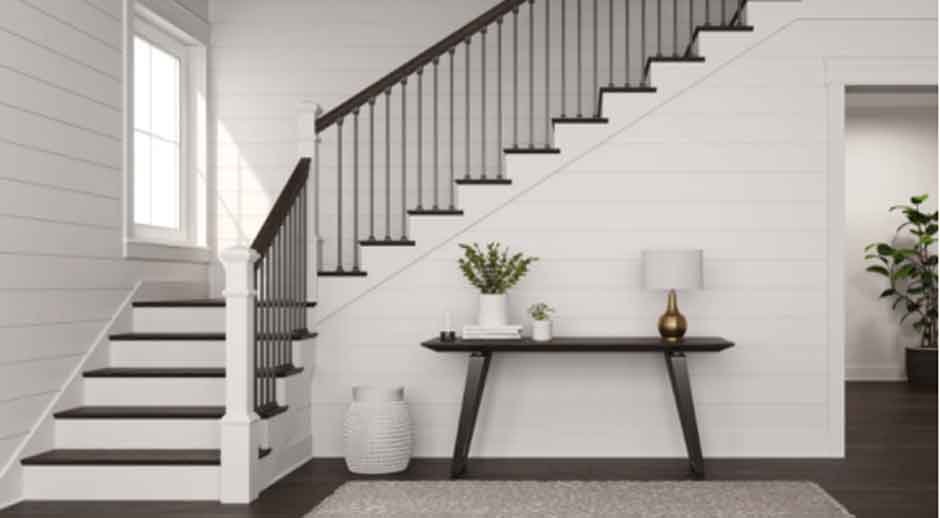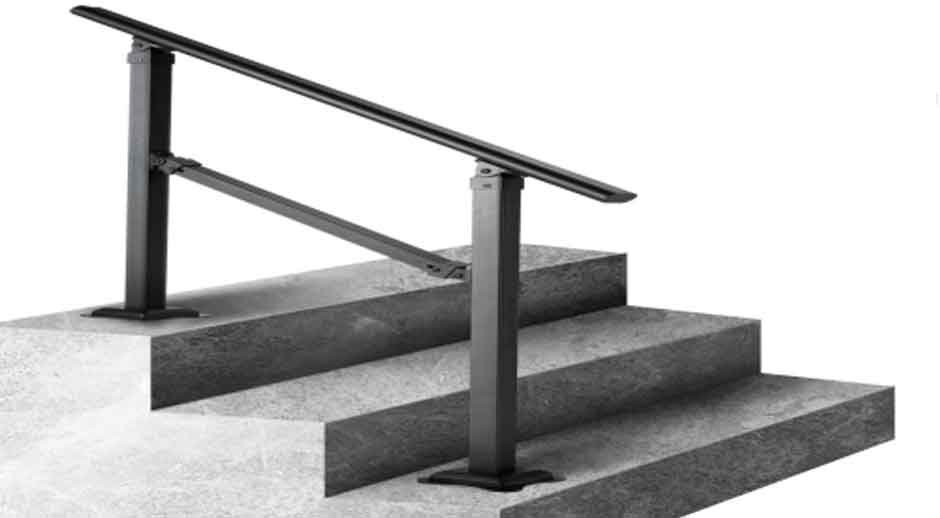Modern interior handrails have become integral elements of contemporary home design, seamlessly blending functionality and aesthetics. Far beyond their traditional role of providing support and safety, modern handrails contribute to the overall visual appeal of a space, elevating it to new heights of sophistication.
Let us explore the transformative impact of modern interior handrails for steps on home design, will discuss their diverse styles, and materials, and how they can be strategically incorporated to enhance both form and function. So, let us start our journey without wasting any time:
Are Interior Handrails Worthwhile?
Interior handrails are undoubtedly worthwhile additions to any home as they offer a blend of practicality, safety, and aesthetic enhancement. Beyond their fundamental role in providing support and stability, handrails contribute significantly to the overall visual appeal of interiors. Modern designs turn handrails into stylish focal points and elevate the ambience of staircases and balconies.
Consulting with a professional or seeking advice from experts in architecture and interior design can provide valuable insights tailored to your specific needs and the unique characteristics of your home.
Design and Materials of Handrails
Handrails are essential architectural components that offer support and safety in a variety of environments. Their usefulness and visual appeal are greatly influenced by their designs and materials. Contemporary handrail designs frequently combine sleek aesthetics and practicality, with simple profiles and clean lines.
Handrails made of stainless steel are long-lasting and stylish, making them appropriate for both indoor and outdoor use. Wrought iron is frequently used in traditional settings because of its timeless and classic appearance. Wood is warm and goes well with a variety of interior design themes. Glass handrails improve visibility and give the space a feeling of openness and airiness.

How to Select the Best Handrail Material and Design?
Selecting the right handrail design and material for your home is a crucial decision that involves both aesthetic and functional considerations. The handrail installation is very simple and free of complexities. The right handrail design and material for your home depend on a combination of factors, including architectural style, durability, safety standards, environmental conditions, and personal preferences.
By carefully evaluating these considerations, you can choose a handrail that not only enhances the aesthetics of your home but also ensures safety and functionality for years to come. The following factors should be taken into account to ensure you choose a handrail that not only complements your home’s design but also provides the necessary support and safety:
● Architectural Style
Consider the architectural style of your home. The handrail should harmonise with the overall design, whether it’s modern, traditional, rustic, or contemporary. For example, sleek stainless steel handrails may be a better fit for a modern home, while wrought iron or wood might complement a more traditional setting.
● Durability and Maintenance
Assess the durability and maintenance requirements of different materials. Stainless steel is known for its durability and resistance to corrosion, making it suitable for both indoor and outdoor use. Wood, while warm and visually appealing, may require more maintenance to prevent deterioration over time. Choose a material that aligns with your lifestyle and willingness to perform maintenance tasks.
● Safety Standards
Ensure that the chosen handrail design and material meet safety standards, especially if it’s intended for use in areas with specific safety regulations, such as staircases. Heights, spacing of balusters, and other safety considerations should be in accordance with local building codes to prevent accidents and ensure the well-being of inhabitants.
● Environment and Location
Consider the environmental conditions and the specific location where the handrail will be installed. Outdoor handrails should be resistant to weather elements such as rain and sunlight. Stainless steel, aluminium, and certain treated woods are excellent choices for outdoor environments due to their resistance to corrosion and decay.
● Personal Preferences
Take into account your personal preferences and any specific accessibility needs. The design of the handrail should not only be visually pleasing but also practical. For individuals with mobility challenges, a handrail should provide a secure grip and be comfortably accessible. Consider the ergonomics and choose a design that suits the needs of all household members.
Conclusion
The intended use, the architectural context, and the intended visual impact all influence the design and material selection in order to create a visually appealing and safe space. Their transformative impact extends across aesthetics, materials, functionality, and the overall ambience of a space. As homes continue to embrace modern design principles, these handrails stand as powerful contributors to the visual appeal and functionality of interior spaces.


